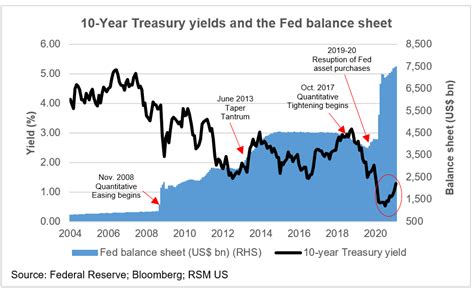The financial world is buzzing with news of a significant shift in the market. Investors are on edge as the 10-year Treasury yield has plummeted below the crucial 4% mark, signaling a flight to safety amidst economic uncertainty.
“This drop in the 10-year Treasury yield is a clear indicator of investors seeking refuge in safe-haven assets.”
To understand the gravity of this situation, let’s delve into what the Treasury yield signifies. The 10-year Treasury yield is a key benchmark used to determine interest rates on various financial products like mortgages and loans. When it drops below certain levels, it can indicate looming economic challenges or investor concerns.
As analysts pore over market data trying to decipher this move, one thing is clear – there’s a palpable sense of unease among investors. The global economy has been facing headwinds from various quarters, including geopolitical tensions and trade disputes. In such turbulent times, investors often flock to safer assets like government bonds, hence driving their prices up and yields down.
“The bond market serves as a barometer for broader economic sentiment and can reflect underlying fears or uncertainties within the market.”
Experts suggest that the recent dip in the Treasury yield could be attributed to a combination of factors. Concerns about slowing global growth, coupled with unresolved trade conflicts between major economies, have fueled apprehensions among investors. Additionally, recent geopolitical events have added another layer of complexity to an already fragile economic landscape.
Stepping back for a moment, let’s consider how this trend might impact everyday consumers. A decrease in the 10-year Treasury yield could lead to lower borrowing costs for individuals looking to buy homes or refinance existing mortgages. This presents an opportunity for many people to save money on interest payments and potentially stimulate spending in other areas of the economy.
Moreover, businesses could also benefit from reduced borrowing costs which might encourage investment in expansion projects or new ventures. Lower interest rates generally translate into increased access to capital for companies, boosting economic activity and job creation.
“The drop in the 10-year Treasury yield not only influences financial markets but also has tangible effects on consumer behavior and business decisions.”
Looking ahead, experts are closely monitoring how central banks will respond to these shifting dynamics. Central banks play a critical role in shaping monetary policy and can implement measures to stabilize markets during periods of volatility. Their actions will be pivotal in restoring investor confidence and steering the economy towards calmer waters.
In conclusion, while fluctuations in the financial markets may seem daunting at first glance, they also present opportunities for stakeholders across various sectors. As investors navigate through uncertain terrain driven by changing yields and market conditions, adaptability and strategic decision-making will be key in weathering any storms that lie ahead.

